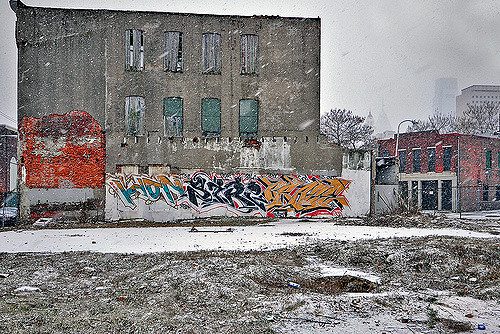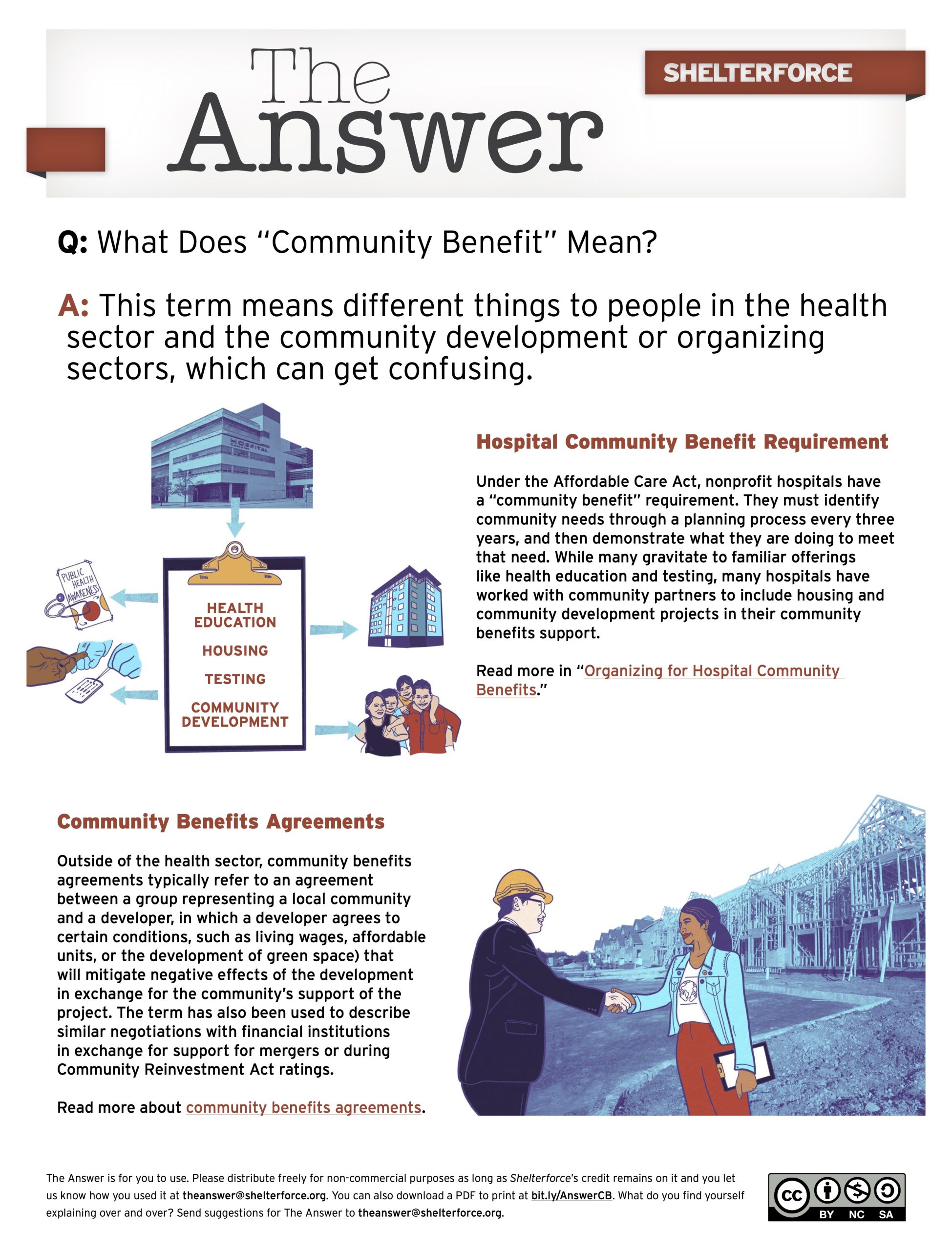
For those trying to convince others—community partners, city officials, hospitals, and health organizations, etc.—to view housing and issues of neighborhood disinvestment through a health lens (and vice versa), the Urban Institute has compiled a helpful one-stop report about the effects of vacant buildings, low-quality housing, and empty lots on the well being of individuals and communities. While there isn’t a lot of new and startling information in Urban Blight and Public Health: Addressing the Impact of Substandard Housing, Abandoned Buildings, and Vacant Lots, the 40-page report does compile various studies related to health and housing issues through the years, some more than 15 years old; others as recent as last year.
The report’s authors, however, point out that several of the studies cited examine only one health impact, like asthma or lead poisoning, in a single place over a short period of time, giving us mostly snapshots of how housing influences health. Also, most of the studies do not provide direct causation, as the methods to do so would take “substantial investments of time and resources.”
Housing
Housing that poses a health and safety hazard to its occupants and a neighborhood is categorized as substandard. As Shelterforce readers already know, people of color and low-income folks are more likely to live in homes with poor conditions due to poverty, a lack of affordable housing nationwide, and local eviction systems. These families cannot keep pace with increasing rental costs, which can often eat up more than 50 percent of their income, and are more likely to go through the eviction process, according to the report. Because of past eviction proceedings, they are more likely to live in homes with maintenance issues like broken plumbing, mold, cockroach, and rodent infestation, exposure to lead and carbon monoxide, etc., all of which have been linked to health issues such as respiratory diseases, psychological dysfunctions, cancer, and even death.
Sadly, it’s children who are most affected by unhealthy housing.
“Poor health outcomes negatively affect the cognitive and socio-emotional development of children, and these children tend to score lower on school readiness and development assessments,” the report points out, citing a 2016 study of 13,762 children in Cleveland, Ohio by Case Western University researchers. “Without programs and policies to repair and maintain housing . . . more children will start school behind their peers.”
Neighborhood Conditions
Research has also shown how life expectancy can change in neighborhoods that are only a few miles a part. A 2016 study in Atlanta, Georgia, found that life expectancies in close neighborhoods varied from 71 years of age to 84, and asserting that “neighborhoods can act as a major determinant of one’s health as well as economic success,” according to the report.
Given that vacant properties attract criminal activity and violence, high concentrations of them can lead to mental distress and higher rates of illness for those living nearby.
For instance, the report cites research in 107 cities with over 150,000 residents that confirmed that people who lived in deteriorated neighborhoods had higher rates of death from cardiovascular disease. The violence—or perception of violence—also led to further disinvestment in the communities.
Strategies and Recommendations
In cities like Baltimore and Detroit, there have been initiatives to address blight and/or abandoned homes by assessing the properties and then either reclaiming or demolishing them. Code enforcement strategies have also been put in place in several U.S. cities to ensure that property owners maintain clean and secure properties, but this initiative is challenging due to capacity issues. Also, little research has examined the health impacts of these strategies and initiatives, according to the report.
Urban Blight and Public Health does offer recommendations for moving forward, including the need to adopt placed-based approaches. There’s also an emphasis on understanding how neighborhood conditions, like the spread of vacant homes, affect individuals and neighborhoods, and the need to expand the use of health impact assessments to bring together scientific data, health expertise, and public input.
“Health Impact Assessments could be a good starting point to identify the range of health outcomes and to design more targeted research projects that could establish stronger links between certain types of code enforcement interventions and neighborhood health improvements,” the report states.
Also important is collaboration with organizations and the government. The report highlights the need for nonprofit organizations to lead effective community-based research projects, and cited two examples of such. The Vacant Property Research Network, for instance, meets regularly with practitioners and researchers about public health, code enforcement, and urban greening. And last year, the Robert Wood Johnson Foundation launched a fellowship program where each research team is required to have a community-based nonprofit as an equal partner.
Policymakers must also come up with comprehensive interventions—with the help of those in community development, health care, housing, education, and social welfare organizations—to address challenges in housing.
Read the full report here.
(Image: damonabnormal via flickr, CC BY-NC-ND 2.0)





Comments